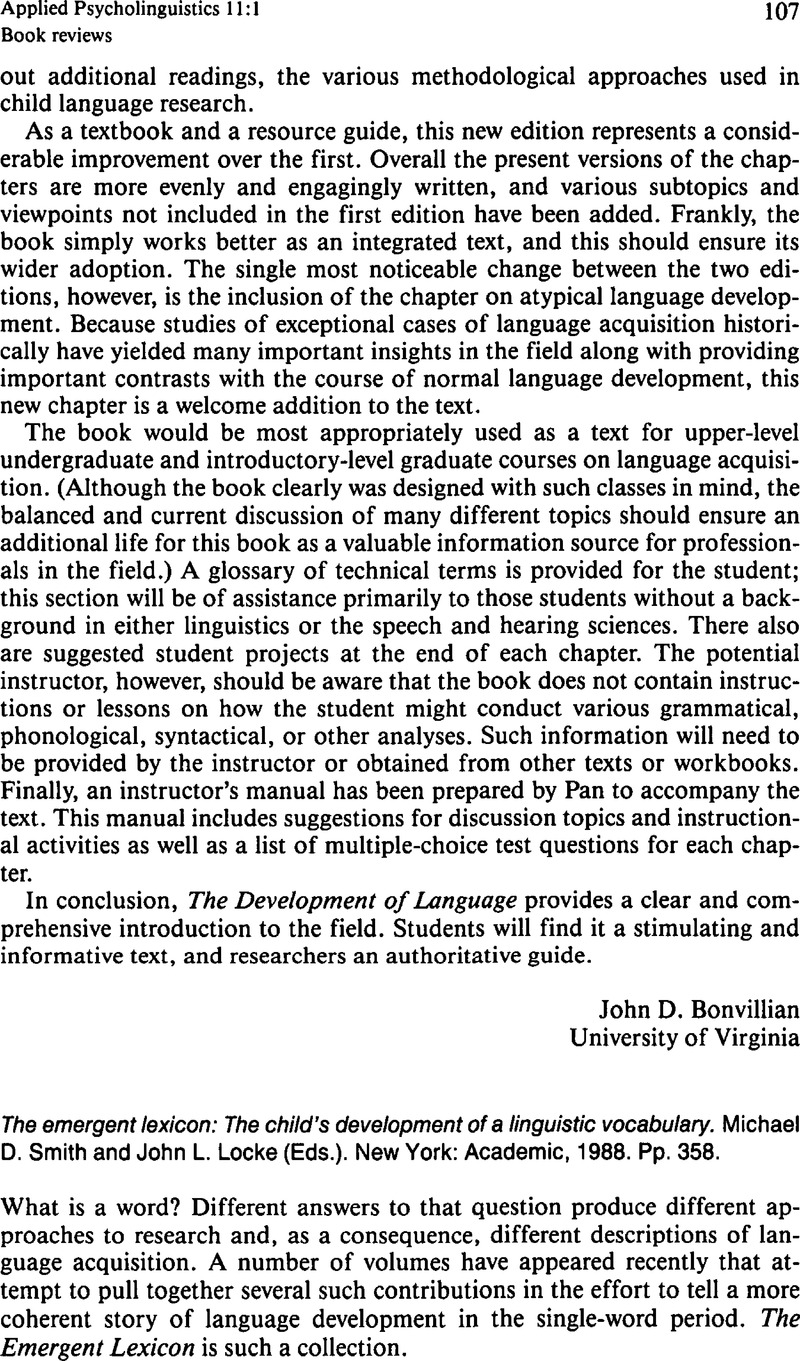Bloom, L. (
1974). Talking, understanding and thinking: Developmental relationship between receptive and expressive language. In
Schiefelbusch, R. &
Lloyd, L. (Eds.),
Language perspectives – Acquisition, retardation, and intervention (pp.
285–
312).
Baltimore, MD:
University Park Press.
Google Scholar 